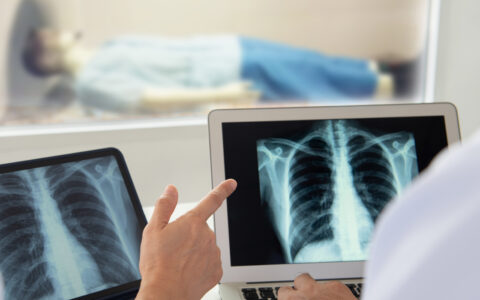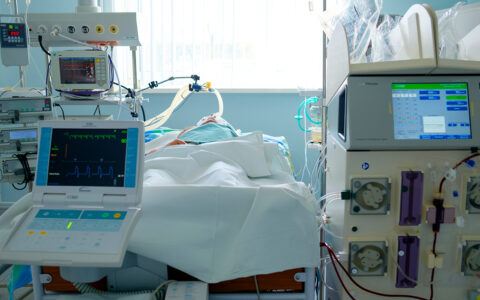Through a novel combination of ex vivo lung perfusion (EVLP) and cross-circulation, researchers at Vanderbilt University Medical Center and Columbia University are working to radically increase the pool of viable donor organs.
“Today, only one in five donor lungs are actually usable,” said Matthew Bacchetta, M.D., Surgical Director of the Vanderbilt Lung Institute and co-author on the group’s latest research in Nature Medicine. “We’re trying to find ways to improve the durability and range of interventional capabilities of organ support systems.”
While the number of lung transplants performed annually in the United States has risen, an estimated 10 to 16 percent of patients approved for transplant die waiting for a match.
Buying Time for Transplants
Today’s clinical EVLP systems can support lungs for up to six hours. This short window leaves little time for interventions that could optimize lungs for a particular recipient. On a practical level, transplant teams are unable to provide extensive pharmacotherapy, immunomodulation or regenerative therapy that might lower acute rejection rates – currently steady at 17 percent.
“If I can keep that organ alive and functional in a homeostatic environment, then we can increase the odds it will recover to a normal level of function and we can transplant it.”
“We need a way to maintain these organs for an extended period of time,” Bacchetta said. “A lung that can’t be used for transplant on the day we collect it may just need more time to recover. If I can keep that organ alive and functional in a homeostatic environment, then we can increase the odds it will recover to a normal level of function and we can transplant it.”
Benefits of Cross-circulation
To extend the transplant window, Bacchetta helped develop an EVLP extracorporeal cross-circulation technique that connects lungs awaiting transplant to the recipient’s circulatory system.
Bacchetta and colleagues from Columbia University Medical Center previously published a proof-of-concept study in Nature Biomedical Engineering using six pairs of healthy donor and recipient pigs. The team built miniature bronchoscopes, humidification chambers and perfusion circuits to prep lungs for transplant. The cross-circulation set-up successfully maintained 36 hours of normothermic perfusion in donor lungs. Lungs subjected to severe reperfusion injury recovered functionally and morphologically from their time outside of their pig donors.
“We’ve developed a functioning system that maintains organ preservation and recovery,” Bacchetta said.
Connecting Human Lungs to Pigs
In their newest study, Bacchetta and colleagues tested whether their cross-circulation system might also help rehabilitate human lungs.
The team connected five human lungs deemed unsuitable for transplant to the circulatory systems of Yorkshire swine. The lungs had all been perfused for six hours and one had failed clinical EVLP. The lungs “consistently demonstrated functional and histological improvements throughout 24 [hours] of xenogeneic cross-circulation,” they wrote.
“All of a sudden, [the lungs are] attached to a functioning liver, a functioning gut. We don’t have to worry about glucose regulation because there’s a pancreas. All of these metabolites that are formed are now cleared,” Bacchetta said in STAT news. “We used a fairly standard immunosuppressive regimen and took these rejected lungs and showed that we could actually sustain them and make them better.”
Extending Applications
Though none of the study lungs were transplanted, Vanderbilt has successfully transplanted lungs rehabilitated with EVLP. The next step may be rehabilitating donor lungs with help from their intended recipient, Bacchetta said.
“In these patients, their liver works, their gut works, their heart works. But their lungs don’t work. So how about if I attach some lungs that are damaged? It’s reversible damage. Let their body work essentially as a bioreactor and allow those lungs to heal.”
“It’s reversible damage. Let their body work essentially as a bioreactor and allow those lungs to heal.”



